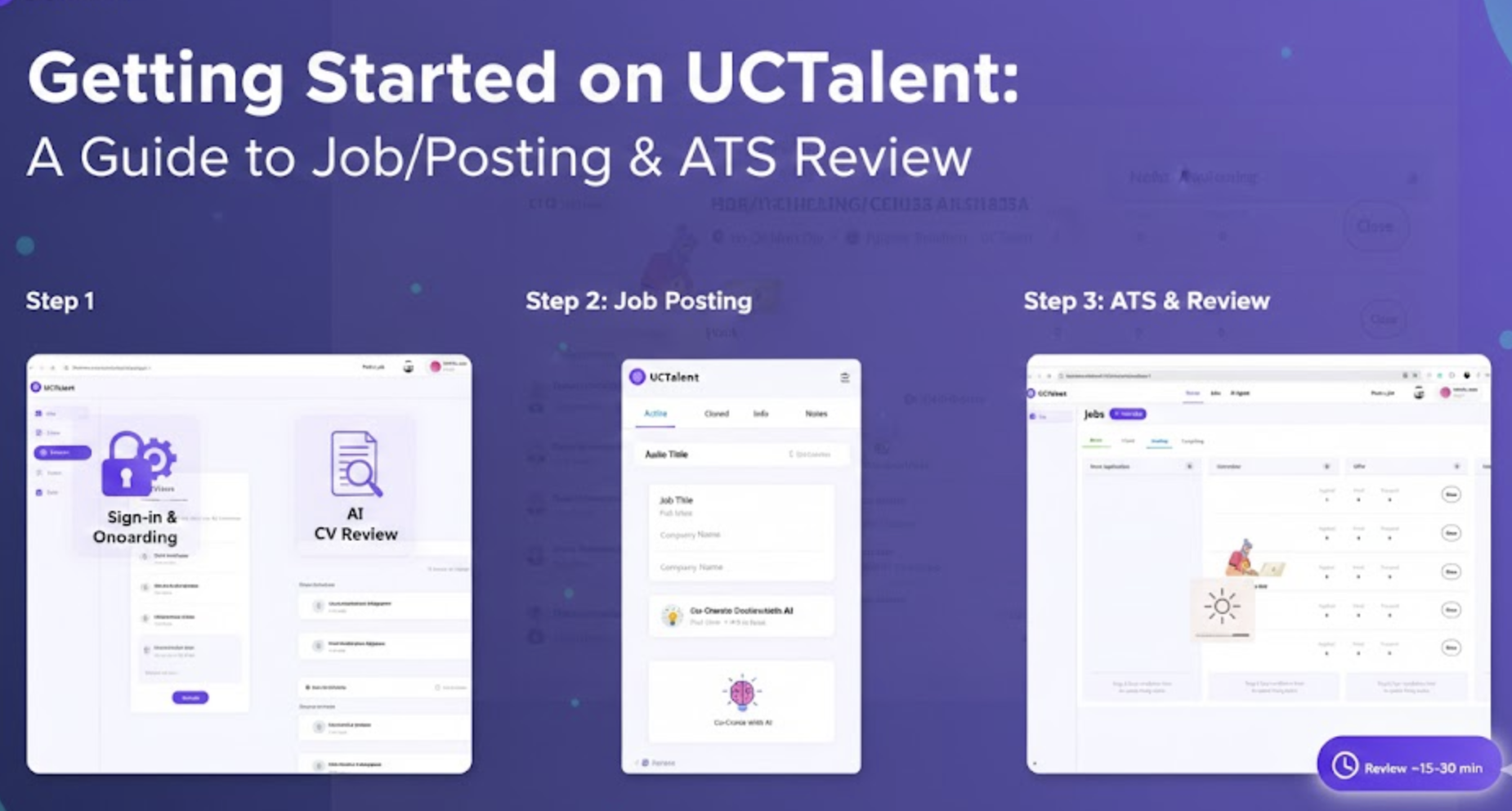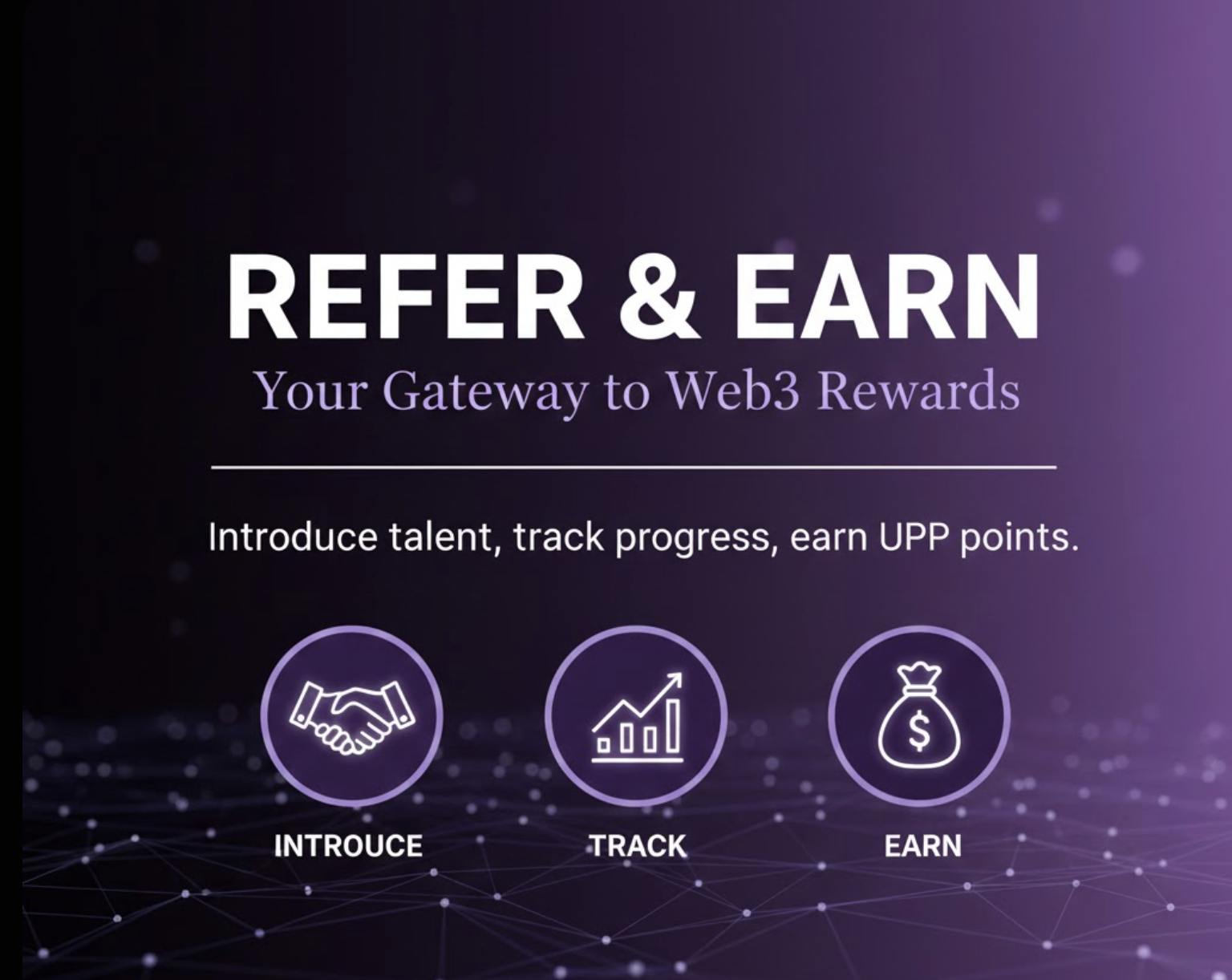DApps: A Beginner's Guide to Decentralized Applications in Web3
The internet is undergoing a transformative shift with the advent of blockchain technology and the rise of Web3. At the heart of this revolution are decentralized applications, commonly known as dApps. If you're new to the world of blockchain and curious about how dApps can reshape your digital interactions, this comprehensive beginner's guide is for you.
At UCTalent, we recognize the importance of understanding these emerging technologies. This guide aims to provide a solid foundation for beginners looking to delve into the world of dApps, specifically explore what dApps are, their key features, benefits, challenges, and how you can get started with them. Plus, we'll link to additional resources to deepen your understanding.
What Are DApps?
Definition

DApps, short for decentralized applications, are software applications that run on a blockchain or peer-to-peer (P2P) network of computers instead of relying on a single centralized server. This decentralized architecture ensures that no single entity has control over the entire application, promoting transparency and reducing the risk of censorship or data breaches.
How DApps Work
Unlike traditional applications that depend on centralized databases and servers, dApps utilize blockchain technology to operate autonomously. Here’s a simplified breakdown of how dApps function:
- Blockchain Network: DApps are built on blockchain platforms like Ethereum, Binance Smart Chain, or Solana. These networks provide the infrastructure for decentralized operations.
- Smart Contracts: The core logic of dApps is encoded in smart contracts self-executing contracts with the terms directly written into code. These contracts automatically enforce rules and execute transactions when predefined conditions are met.
- Peer-to-Peer Interaction: Users interact directly with the dApp through their wallets, facilitating transactions and data exchanges without intermediaries.
Key Features of DApps
Understanding the fundamental characteristics of dApps is essential for grasping their potential and how they differ from traditional applications.
1. Open Source
Most dApps are open source, meaning their code is publicly accessible. This transparency allows developers to audit the code for security, contribute to its improvement, and ensure that the application operates as intended without hidden functionalities.
2. Decentralized
DApps operate on a decentralized network of computers (nodes), eliminating the need for a central authority. This decentralization enhances security, as there is no single point of failure, and ensures that the application remains operational even if some nodes go offline.
3. Incentivization
Many dApps incorporate token-based incentive models to encourage user participation and contribution. Users can earn tokens by performing specific actions, such as providing liquidity, creating content, or contributing to the network’s security.
4. Smart Contracts
Smart contracts are the backbone of dApps. They automate processes, enforce rules, and execute transactions without human intervention. This automation reduces the risk of errors and fraud, ensuring that the dApp operates smoothly and transparently.
5. Transparency and Immutability
All transactions and changes within a dApp are recorded on the blockchain, making them immutable and transparent. This ensures that all activities are verifiable and cannot be altered retroactively, fostering trust among users.
Benefits of DApps
DApps offer numerous advantages over traditional centralized applications, making them an attractive option for both developers and users.
1. Enhanced Security
The decentralized nature of dApps makes them more secure against hacks and data breaches. Since there is no central server to attack, it is significantly harder for malicious actors to compromise the entire application.
2. Greater Transparency
All transactions and code changes are recorded on the blockchain, ensuring complete transparency. Users can verify the operations of the dApp, fostering trust and accountability.
3. User Control and Ownership
DApps give users full control over their data and digital assets. Unlike centralized platforms where user data can be exploited or sold without consent, dApps ensure that users retain ownership and control.
4. Reduced Dependence on Intermediaries
By eliminating middlemen, dApps reduce costs and increase efficiency. Users can engage in direct transactions, saving time and resources that would otherwise be spent on intermediary fees.
5. Censorship Resistance
DApps are resistant to censorship because they are not controlled by any single entity. This ensures that content and transactions cannot be easily restricted or manipulated by external forces.
6. Innovation and Community-Driven Development
The open-source nature of dApps encourages innovation and collaborative development. Communities can contribute to the growth and improvement of dApps, leading to more robust and feature-rich applications.
DApps vs Traditional Apps
To fully appreciate the value of DApps, it's essential to understand how they differ from traditional centralized applications.

Centralization vs Decentralization: Traditional apps are controlled by a single entity, such as a company, which manages data, enforces rules, and controls access. In contrast, dApps operate on decentralized networks where control is distributed among all participants, ensuring no single point of authority.
Data Ownership: In traditional applications, user data is stored and managed by the service provider, often leading to concerns about data privacy and misuse. DApps, however, empower users by allowing them to own and control their data directly through blockchain wallets.
Revenue Models: Traditional apps typically rely on advertising, subscriptions, or transaction fees for revenue. DApps often use tokenomics, where users earn tokens for participating in the ecosystem, creating a more interactive and incentivized environment.
Real-World Examples of DApps
Understanding how dApps function in real-world scenarios can provide valuable insights into their practical applications and potential impact.
1. Uniswap
Category: Decentralized Finance (DeFi)

Uniswap is a leading decentralized exchange (DEX) that allows users to trade cryptocurrencies directly from their wallets without intermediaries. It utilizes automated liquidity pools and smart contracts to facilitate seamless and secure transactions. Uniswap's success demonstrates the power of DeFi dApps in disrupting traditional financial services.
2. Axie Infinity
Category: Gaming

Axie Infinity is a play-to-earn game where players collect, breed, and battle digital creatures called Axies. The game leverages blockchain technology to ensure true ownership of in-game assets, allowing players to trade their Axies on the open market. Axie Infinity has gained massive popularity, highlighting the potential of dApps in the gaming industry.
3. Decentraland
Category: Virtual Reality / Metaverse

Decentraland is a virtual world where users can buy, sell, and build on virtual land parcels represented by NFTs. It combines blockchain technology with virtual reality, enabling a fully decentralized and user-owned metaverse. Decentraland showcases the potential of dApps in creating immersive and interactive virtual experiences.
How to Use DApps
Using dApps is straightforward once you understand the basic steps. Here’s a guide to help you get started

1. Set Up a Crypto Wallet
A crypto wallet is essential for interacting with dApps. Popular wallets include:
- MetaMask: A browser extension that supports Ethereum and other compatible blockchains.
- Trust Wallet: A mobile wallet that supports multiple cryptocurrencies and dApps.
- Coinbase Wallet: A user-friendly wallet with integrated dApp browsing.
2. Acquire Cryptocurrency
Most dApps require some form of cryptocurrency to function. Purchase the necessary tokens from reputable exchanges like Coinbase, Binance, or Kraken and transfer them to your wallet.
3. Connect to a DApp
Visit the dApp’s website and connect your wallet. This typically involves clicking a "Connect Wallet" button and approving the connection through your wallet interface.
4. Interact with the DApp
Once connected, you can start using the dApp’s features. Whether it’s trading on Uniswap, playing Axie Infinity or lending on Aave, each dApp offers unique functionalities that you can explore.
5. Manage Transactions
Monitor your transactions through your wallet or blockchain explorers like Etherscan. Ensure that you keep track of your activity and manage your assets responsibly.
6. Stay Safe
- Verify URLs: Ensure you’re visiting the correct dApp website to avoid phishing scams.
- Secure Your Wallet: Use strong passwords and enable two-factor authentication where possible.
- Beware of Scams: Be cautious of unsolicited messages or offers that seem too good to be true.
Conclusion
DApps represent a significant leap forward in how we interact with digital applications and services. By leveraging blockchain technology, they offer enhanced security, transparency, and user autonomy, setting the stage for a more decentralized and equitable internet. While there are challenges to overcome, the potential benefits of dApps are immense, spanning various industries from finance and gaming to social media and beyond. This beginner’s guide serves as an introduction to dApps and their role in the Web3 ecosystem.
For more in-depth articles and career insights in the blockchain space, visit UCTalent. Embark on your journey into the world of decentralized applications today, and be part of the revolution that’s shaping the future of the internet.







.png)




